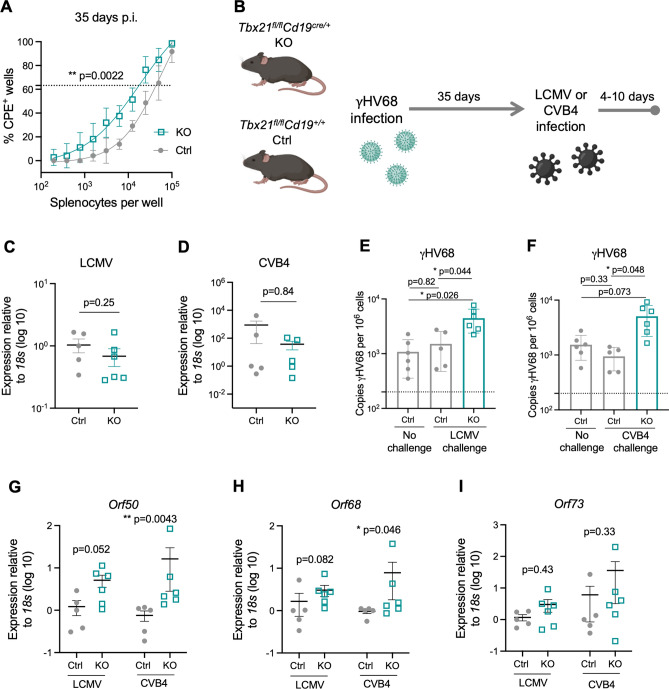Figure 6.
ABC knockout mice are more susceptible to reactivation. (A) Tbx21fl/flCd19+/+ (Ctrl, filled grey circles) and Tbx21fl/flCd19cre/+ (KO, open blue squares) mice were infected i.p. with γHV68. 35 days p.i., spleens were collected and processed for reactivation assay. N = 6 mice per group, data compiled from two independent experiments. (B) Experimental scheme for data shown in panels (C–I). Ctrl and KO mice were infected i.p. with γHV68 for 35 days and then challenged with either LCMV (Armstrong) or CVB4 for 10 to 4 days, respectively. (C–I) Spleens collected, processed, and DNA and RNA was extracted from total splenocytes following RBC lysis. (C,D) Relative expression of LCMV (C) and CVB4 (D) between Ctrl and KO mice measured by RT-qPCR. (E,F) Copies of γHV68 detected by qPCR in the spleen per million cells following challenge with LCMV or CVB4. (G–I) Relative expression in the spleen of Orf73, Orf50, and Orf68 in Ctrl and KO mice. Each data point represents an individual mouse. Both male and female mice included in experiments. Data presented as mean ± SEM, analyzed by Mann–Whitney test (A,C,D,G–I) or one-way ANOVA (E,F). p-values indicated as asterixis as follows: **p < 0.01, *p < 0.05.

